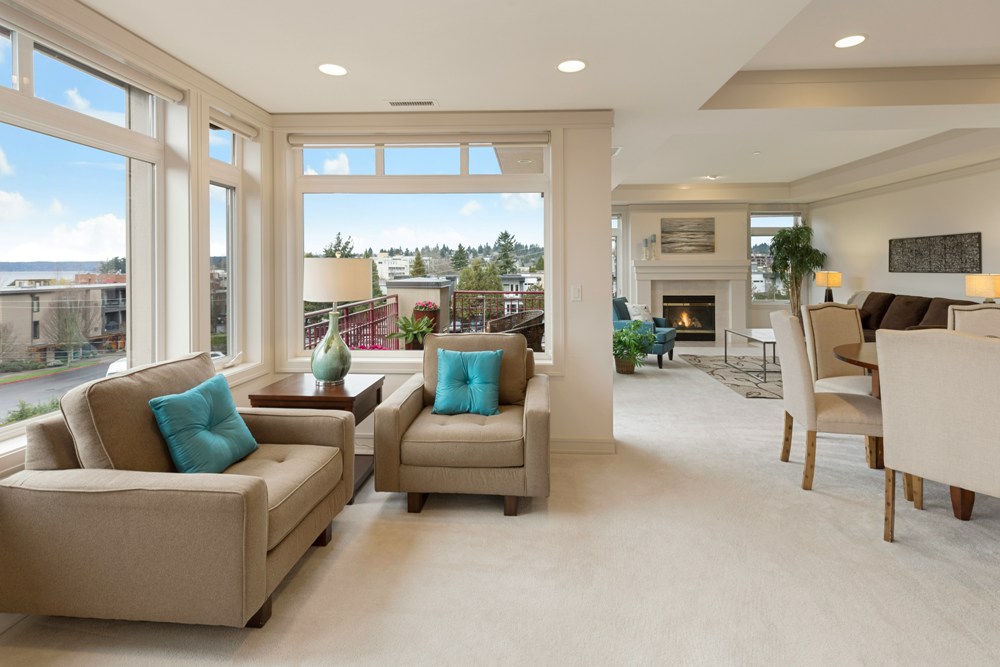
Selecting the ideal furnishings for a living room involves more than a casual scan of colors and styles. It is a layered process that merges taste with practicality and proportion with purpose. A thoughtfully arranged space speaks volumes about its inhabitants, serving as a canvas for relaxation, conversation, and aesthetics. Every decision, from the tactile texture of upholstery to the line of sight across the room, can subtly shift how the space is experienced. Successful design integrates lifestyle needs with visual clarity, using elements such as lighting, architecture, and layout to elevate a room's potential without overwhelming it. Whether working with an expansive open concept or a modest nook, knowing how to select each piece with intention ensures a cohesive, inviting environment that endures across trends.
Understanding Spatial Flow and Scale
Before selecting any furniture, it is vital to assess the spatial dynamics of the living room. This includes measuring dimensions, accounting for architectural elements like doorways and windows, and identifying primary traffic paths. The objective is to avoid overcrowding while preserving openness and accessibility. A small room benefits from furniture with slim profiles and elevated legs that create a visual lightness, while larger rooms require grounding elements with broader proportions. Every room has its rhythm, and respecting that rhythm with scale-appropriate selections prevents visual imbalance. Consider whether the space will serve intimate gatherings or frequent entertaining, and use that knowledge to prioritize either seating capacity or a more minimalist layout. A measured approach to space cultivates a sense of calm and sophistication that invites both movement and pause.
Identifying a Cohesive Design Vision
Determining a guiding vision helps maintain cohesion when mixing textures, finishes, and silhouettes. Whether drawn to a mid-century aesthetic, transitional style, or something more eclectic, consistency in tone, color palette, and materiality ensures visual harmony. A design narrative may begin with a single inspirational piece such as a heritage rug or a sculptural lighting fixture, then extend outward into coordinating elements. Complementary tones rather than perfect matches create depth without rigidity. Soft neutral tones may be punctuated with bold accents, while contrasting materials such as velvet and wood add tactile dimension. Furniture should reflect the architectural character of the home while introducing enough modernity or warmth to personalize the room's identity. When done well, every piece belongs to a unified story without sacrificing individuality.
Selecting an Appropriate Sofa Style
As the visual and functional anchor of the living room, the sofa commands attention and sets the tone for surrounding pieces. The style, shape, and upholstery of the sofa influence the overall energy of the space. A structured silhouette evokes a formal tone, while deeper seats with plush cushions suggest relaxed luxury. Fabric choices also play a central role; natural linens and bouclés add softness, while leather provides both durability and a tailored aesthetic. Color must complement the room's palette without dominating it. For expansive spaces, sectionals or symmetrical double-sofa arrangements provide balance, while a single curved sofa may soften angular architecture and encourage a conversational flow. Every detail, from leg finish to cushion configuration, should be evaluated against the room's purpose and aesthetic goals.
Balancing Seating and Circulation
Once a primary sofa is chosen, supplemental seating must reinforce the room's layout and encourage comfort without disrupting flow. Armchairs, accent chairs, and ottomans should provide flexibility and visual interest without appearing as afterthoughts. Chairs with open silhouettes or exposed bases maintain spatial transparency, particularly in smaller areas. Positioning must also account for conversational groupings while leaving room for natural movement. Placing living room furniture too far apart can create disconnection, while overly tight arrangements inhibit relaxation. Consider using rugs to visually define the seating zone, anchoring disparate pieces into a coherent ensemble. A well-constructed seating arrangement fosters both intimacy and openness, adapting to the changing rhythms of daily life and social occasions.
Layering Texture and Material Contrast
Depth and sophistication emerge when varied materials and finishes are thoughtfully layered throughout the space. Combining contrasting elements such as sleek marble, rustic wood, and tactile textiles infuses a room with sensory intrigue. Smooth glass surfaces may offset heavy upholstery, while woven accents introduce an organic warmth. Pay attention to repetition and balance across materials so that one element does not overpower others. Furniture with mixed finishes, such as a metal-framed coffee table paired with a lacquered wood console, creates dimensionality when repeated subtly throughout the room. Textural diversity also encourages tactile engagement, inviting guests to interact with their surroundings. This intentional interplay between soft and hard surfaces contributes to a sense of comfort and refinement.
Choosing Lighting with Purpose
Lighting should support both the room's functionality and its ambiance, acting as an extension of the overall design. Layered lighting through a combination of ceiling fixtures, table lamps, and floor lamps allows the room to transition between daytime vibrancy and evening intimacy. When selecting lighting elements, consider the interplay of shape and material with existing furniture. Sculptural forms may echo architectural features, while muted metallics or ceramics can add warmth and elegance. Dimmer switches enhance control over mood and energy efficiency, particularly in multipurpose spaces. A thoughtful lighting plan elevates the presentation of furnishings while supporting visual comfort and balance throughout the day.
Incorporating Storage That Blends In
Functional storage elements should integrate seamlessly with the room's aesthetic, avoiding the appearance of clutter or utilitarian bulk. Furniture with hidden compartments, built-in shelving, or multi-purpose design helps preserve visual cleanliness. Console tables, credenzas, and storage ottomans offer stylish solutions that combine utility with elegance. Custom built-ins can provide a tailored look while maximizing vertical space. Selecting storage pieces that mimic the material palette of primary furnishings ensures they recede visually when not in use. Intelligent storage design prioritizes both access and discretion, maintaining the room's openness while enhancing its practicality for daily living.
Adding Visual Balance with Accent Pieces
Accent tables, sideboards, and consoles serve as punctuation points throughout the living room, offering visual relief and surface area without overwhelming the composition. These pieces should echo the lines, colors, or materials of larger furnishings while introducing fresh geometry or scale. An asymmetrical arrangement may feel dynamic, while symmetrical pairings reinforce traditional elegance. Decorative accents such as vases, sculptures, and trays lend character and purpose to these furnishings. The placement of accents should respond to lighting and sightlines, enhancing focal points and contributing to a cohesive whole. Thoughtfully chosen accents bridge function with artistry, refining the space with curated detail.
Defining the Role of Living Room Furniture
Living room furniture must meet the dual demands of aesthetics and purpose, adapting to the daily functions of its occupants. A well-appointed room considers how people gather, how they relax, and how they move through space. Coffee tables must accommodate reach and flow, while side tables should align with armrest height for accessibility. Modular pieces offer flexibility, especially in rooms that serve multiple purposes throughout the day. Coordinating upholstery across pieces ensures visual continuity, but introducing variation in color or silhouette prevents monotony. Quality craftsmanship and durable materials enhance longevity, ensuring that furniture maintains its appearance and integrity over time. The art of furnishing lies in harmonizing utility with elegance, ensuring each piece contributes meaningfully to the whole.
Exploring the Versatility of a Curved Sofa
As both a sculptural and functional element, a curved sofa introduces organic softness and architectural interest into the living room. Its sinuous shape encourages conversation by subtly guiding the seating arrangement into a circular configuration. Unlike linear designs, a curved sofa adapts well to open spaces, where its form acts as a visual divider without imposing rigidity. It also responds elegantly to rooms with bay windows or rounded corners, echoing the geometry of the structure. Upholstery in neutral tones amplifies its graceful profile, while bold fabrics elevate its presence as a centerpiece. The curved sofa embodies both movement and repose, blending fluidity with sophistication in a way that conventional seating rarely achieves.
Considering Comfort and Energy Efficiency
Modern furniture selections must also reflect concerns about comfort and energy efficiency. Upholstery materials should support thermal regulation by offering breathability and insulation depending on climate. Sofas and chairs placed strategically near windows or vents can affect airflow and heating or cooling demands. Window treatments, floor coverings, and upholstery weight all contribute to energy retention or dissipation within the room. Furniture placement that aligns with natural light reduces dependence on artificial lighting, while light-colored surfaces can amplify ambient illumination. Thoughtful planning enhances comfort while supporting more efficient energy use, aligning functional goals with aesthetic principles.
A curated living space tells a story through its layers, textures, and the thoughtful interplay of light, form, and purpose. Each element, from a minimalist media console to an elegant curved sofa, contributes to a sense of identity rooted in both taste and intention. Living room furniture should adapt to its environment while enhancing the lives of those who use it. Functional elegance is achieved by choosing pieces that not only fulfill their purpose but also offer beauty and longevity. As needs and styles evolve, the ability to layer, rearrange, or replace select pieces without disrupting the room's essence ensures enduring appeal. Whether anchored by a conversation-ready seating arrangement or defined by its energy-efficient use of space, a well-furnished living room transcends decor to become a reflection of enduring design values.
EDITORIAL POLICY
The Flash List is dedicated to providing trustworthy editorial content by maintaining strict ethical standards, journalistic integrity, and credible professionalism regardless of any remuneration as working media. The Flash List is not affiliated with third-party companies mentioned and makes no endorsement or guarantee expressed or implied. The preceding article, which contains affiliated link(s) for which compensation was received, is intended for informational reference only and does not constitute advice of any kind. Moreover, a qualified professional should be consulted regarding any lifestyle consideration, medical treatment, or monetary transaction, etc. Content is published in accordance with USFTC regulations and terms and conditions.
MORE ON THE FLASH LIST
































